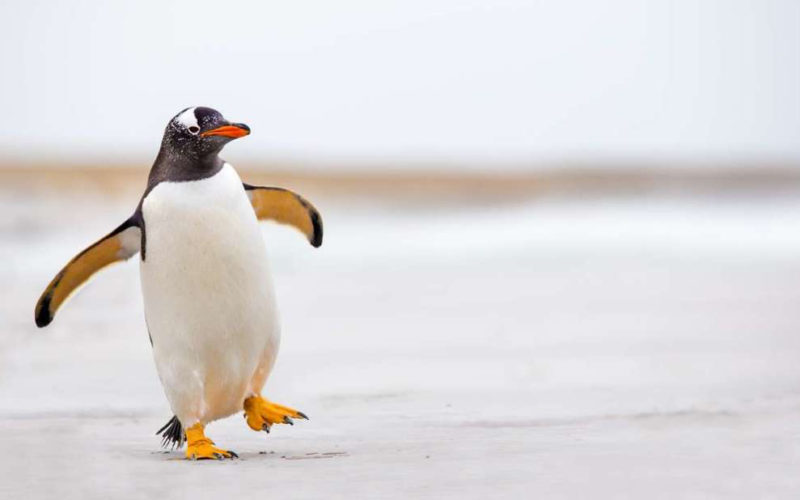Salting isn’t best solution for winter’s ice
AMANDA BANCROFT
Making Ripples
Everybody loves penguins, right? It’s fun to watch them waddle along. When things get icy, they simply flop onto their bellies to sled down hills. When things get icy for humans, we flop onto our backsides and don’t go far (except to the emergency room). Traversing an icy parking lot takes the courage of an intrepid explorer crossing a frozen arctic sea, and slippery steps may as well be Mount Everest. People just aren’t penguins. This leads to salting roads and walkways for safety’s sake, but the practice isn’t truly safe.
Salt can burn paws and sicken kids who play in the snow. Conventional road salt takes a cruise down the street, killing plants and decreasing soil biodiversity, ending up in rivers and lakes where it kills frogs, fish and more. So what can we do to avoid broken bones while protecting our pets’ paws and the environment?
The best, cheapest option is to avoid salting altogether. Placing a sheet, tarp, towel or other surface over your car windshields and front steps allows you to lift the ice off once precipitation stops. If you just need cheap traction, use everyday products like coffee grounds, sawdust or non-clumping kitty litter. Some people prefer to build muscle by breaking up the ice with a shovel. Sugar also melts ice and can even be used in conjunction with an eco-friendly salt product and used as a prevention before the snow and ice arrive.
For true forward-thinking folks with time, consider the design of your space. Are potholes turning to puddles that freeze into ice rinks? Could steps be shielded from precipitation? Are concrete, non-porous surfaces really necessary, or could you use porous, rougher surfaces like gravel to decrease erosion from summer storms and prevent ice in winter?
But sometimes you need to de-ice an area safely and quickly. If you see a product advertised as pet-friendly, it’s usually good or at least better for the environment as a whole. SafePaw.com offers a product that’s OK for pets and children, melts ice without salts, provides traction and prevents further ice build-up for three days after application.
Always read product labels and avoid purchasing anything that doesn’t list ingredients. Don’t buy salts that use sodium chloride, the worst kind of salt. It’s easy to be fooled by green product labeling.
For those like myself who are concerned about doing poor penguin impressions and ending up injured, there are slip-over shoe grips that can be attached to boots or shoes and provide excellent traction everywhere you walk, not just the salted “safe” places. As with every choice in life, the key is to do some research, decide what you’re capable of, set a future goal if an immediate change isn’t possible, and adapt your strategy if you ever learn that the current fix is less sustainable than it sounded. Get better rather than give up!
Amanda Bancroft is a writer, artist, and naturalist living in an off-grid tiny house on Kessler Mountain. She and her husband Ryan blog about their adventures and offer tips to those wanting to make a difference at www.MakeRipples.org.










